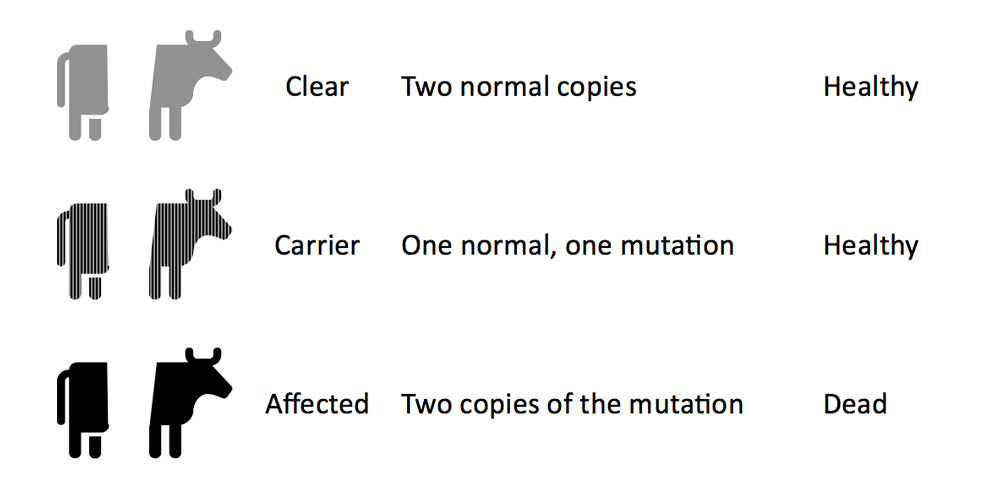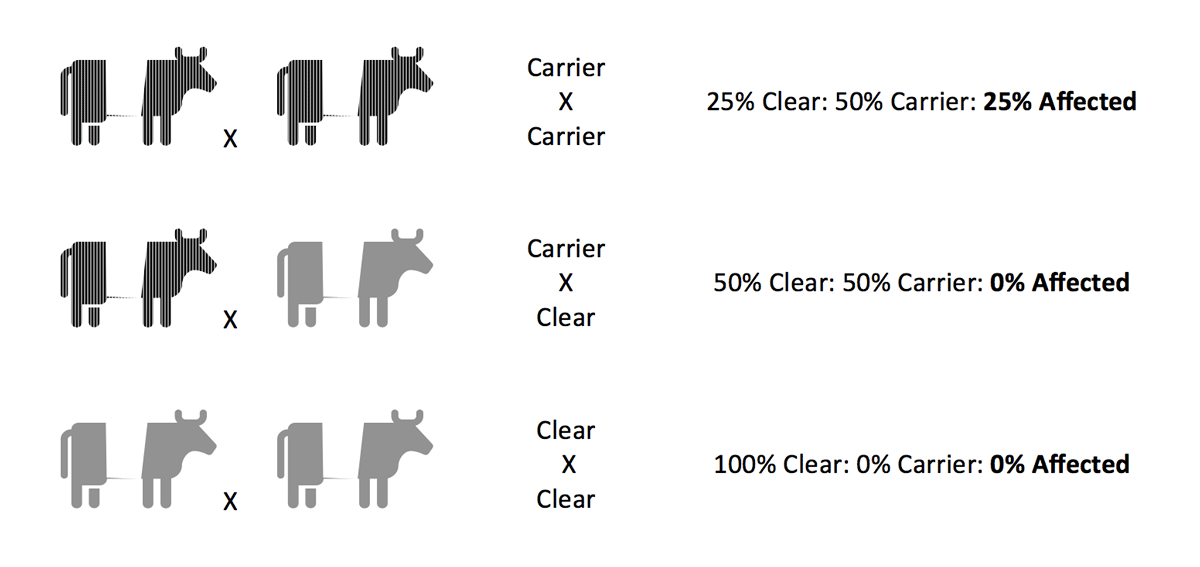You will have received lots of information about our work to reduce AM in the breed. This is a basic guide to the genetics of the disorder to help explain the society’s decisions and help you make breeding decisions for your own herd.
AM is a genetic disorder that is due to a mutated section of DNA. If a calf inherits two copies of the mutation it is likely to die in utero or at birth. Where calves do survive, they are born with severe deformities which require euthanasia at birth. With AM, there are three possible types of animals:

AM is not an infectious disease and can only be passed on through an animal’s genes. This means we can predict the chance of having different types of calves (clear, carrier or affected). These are the possible outcomes of mating clear and carrier animals:

Knowing that your current stock bull is not a carrier will give you confidence that you will not breed any affected animals, even if you have carrier females within your herd or you buy some to join your herd.
The only way we can get an affected calf is by breeding carrier to carrier. This is why the society has made the decision to ensure all newly registered bulls are clear. This means carrier females can continue to breed without the risk of producing affected calves. We also urge all breeders to consider testing their previously registered stock bulls.
On average, half the calves produced from breeding carrier females to clear bulls will continue to be carriers. However so long as the bull is clear, they will not produce affected calves and should not affect the performance of the herd.
Carrier females should only be an issue for those breeding bulls. Any bull calf they produce will have a 50% chance of also being a carrier and not eligible for registration. Therefore, we recommend the testing of any potential bulls at a young age so that you do not waste resources rearing any ineligible calves.
In some situations, breeders may also want to test their females to completely eliminate the mutation from their herd. This would be more important for anyone continuing to use an older stock bull who is a carrier to ensure carrier x carrier matings do not occur. It may also be an option for those who aim to breed many bulls to reduce the chance of producing carrier calves. However, by ensuring that all breeding males are tested, routine testing of females is not a necessity. We are grateful to those that have already tested females as this has given us a more accurate estimate of the prevalence of the mutation in the breed.
Dr Harriet Bunning
